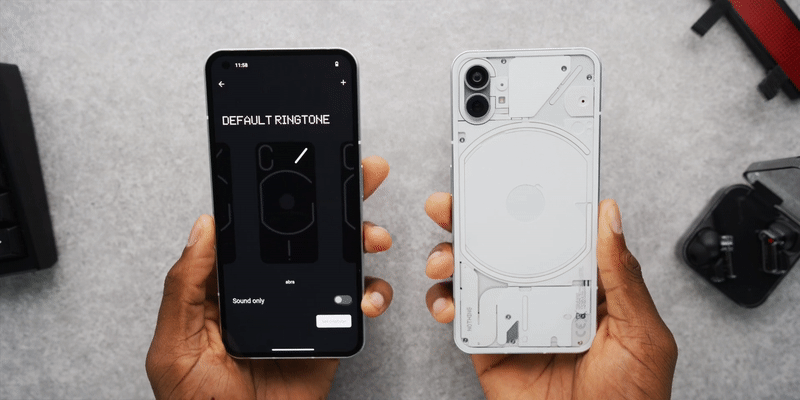Nothing, the smartphone brainchild of CEO Carl Pei, co-founder of OnePlus, is once again testing the efficacy of its hype machine. The company is currently known for its economical earbuds, the Ear (1), which offer a pretty impressive bang for the buck at $US100 ($139). It’s also been relentlessly teasing the upcoming launch of the Phone (1), its first Android flagship, without offering many concrete details about the smartphone’s abilities beyond a look at the launcher it’s bundled with. Today, the hype machine continues on, with a look at the phone’s lighting system and an early opportunity to pre-order it.
The Nothing Phone’s “Glyph Interface” Lighting
In the latest video from renowned YouTuber, Marques Brownlee (also known as MKBHD), we finally glimpse one of the smartphone’s marquee features: its light-up chassis. But it’s a wonder if it’s enough to convince Android users, bored of the same Samsung v. Google story, that this thing is worth blindly dropping a thousand-or-so dollars on.
The back of the device is known as Nothing’s “glyph interface,” with 900 individual LEDs embedded into a neat, futuristic pattern. The see-through aesthetic of the back is highly reminiscent of those same Nothing buds.
In the video, Brownlee walks us through how all the strips on the back light up to show notifications, while the central circle — which borrows an aesthetic from Apple’s MagSafe ring with the iPhone’s accessories — lights up to indicate whether you’re charging wireless or reverse wireless charging another device. That last feature is already available on Google’s Pixel devices and Samsung’s flagship Galaxy lineup, without light-up parts on the device’s exterior.

You also won’t have to turn on the screen to see your charging progress with the Nothing smartphone. Instead, you can check the bottom light strip on the back to see the progress. Like the Android phones of yore and flip phones, you can also program those backlights to flash in tandem with ten built-in ringtones. And if you need extra light, the LEDs can be used as filler light for photos.
From what I can see in the video, the Nothing Phone (1) certainly looks cool. But I don’t necessarily see this particular design paradigm being game-changing. We’ve seen Android phones throughout the years attempt to pave their way based on a different type of aesthetic (remember the Nextbit Robin?) with little success beyond the initial launch.
You can already bid on the Nothing Phone
You won’t hear much about the rest of the components that make up the Nothing Phone (1) from Brownlee’s video, nor will you learn about how the phone functions altogether. Nothing will reveal the rest of the details at a July 12 event (unless it decides to keep teasing bits up until then, which seems possible).
If you’re hyped up on the neat-looking rear-facing LEDs, you can bid on a pre-order of the first 100 units of the Nothing Phone (1) through DropX, a subsidiary of StockX. I’ve reached out to the company to clarify how this will work and if it plans to sell through this particular site.
One thing that stands out in the description for the auction is that the “Nothing Phone (1) is not fully supported in North America.” It’s possible that because Nothing hasn’t finalised its carrier partnerships in the U.S., it would rather not promise something ahead of launch.
With the auction, it seems like Nothing is going for a similar launch strategy as Carl Pei’s former darling, OnePlus, which has sunk into the arms of its big owners overseas since Pei’s exit. When OnePlus initially launched in 2014, the company used an invite-only campaign to help market an air of exclusivity. And it worked, as the phones are now available on most U.S. carriers after years of online-only sales.
However, it’s a wonder if Nothing will have that opportunity. We won’t know if it has U.S. carrier support until the official event. But without it, the Phone (1) could be dead on arrival. Apple and Samsung continue to dominate the U.S. charts in market share, and both are helped in part by their carrier relationships. While gadget hype can do wonders for helping escape the doldrums of a society trudging through a neverending pandemic, it’s unlikely to be the thing that knocks Apple off its throne, at least the way Pei intends.
